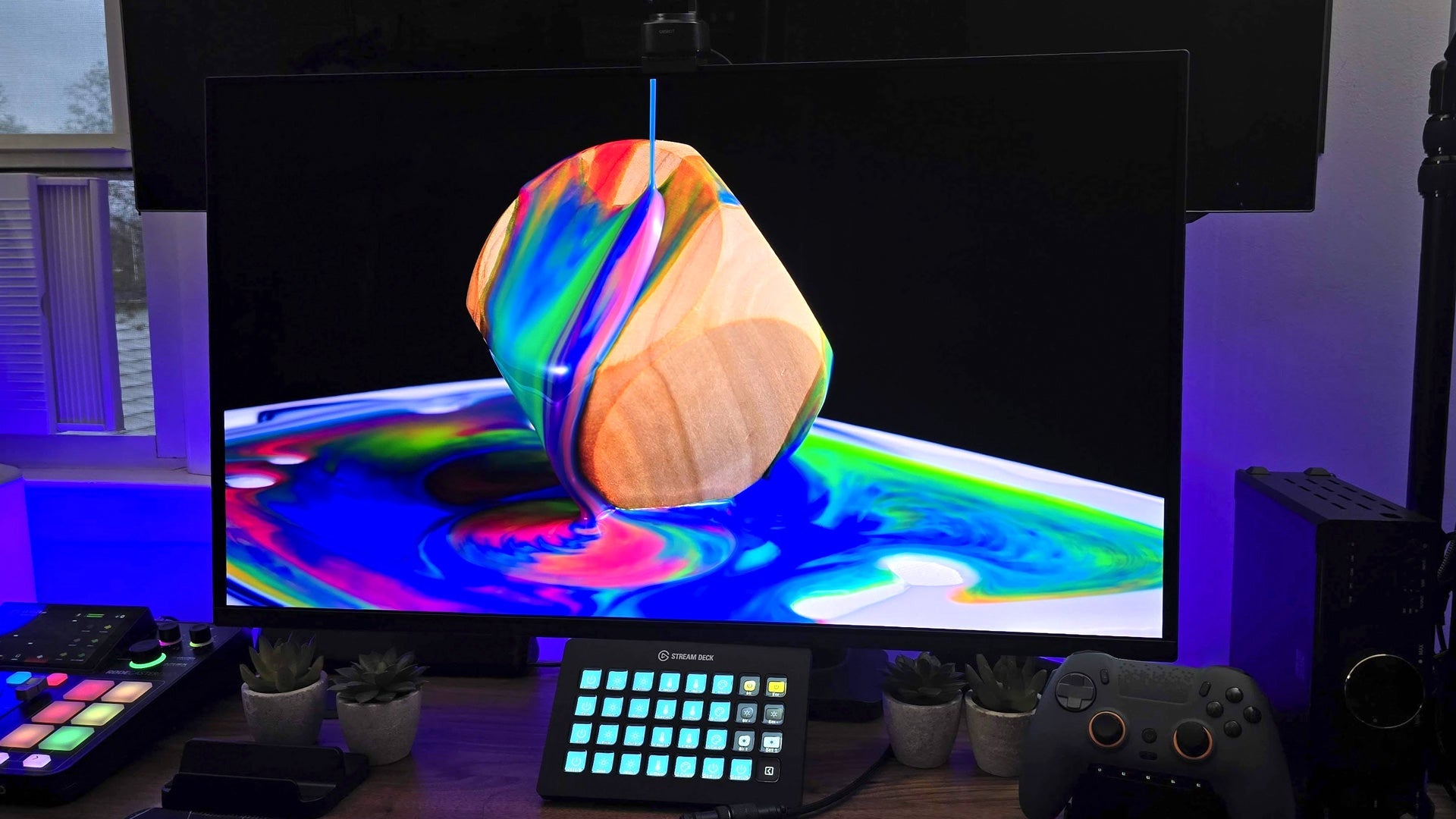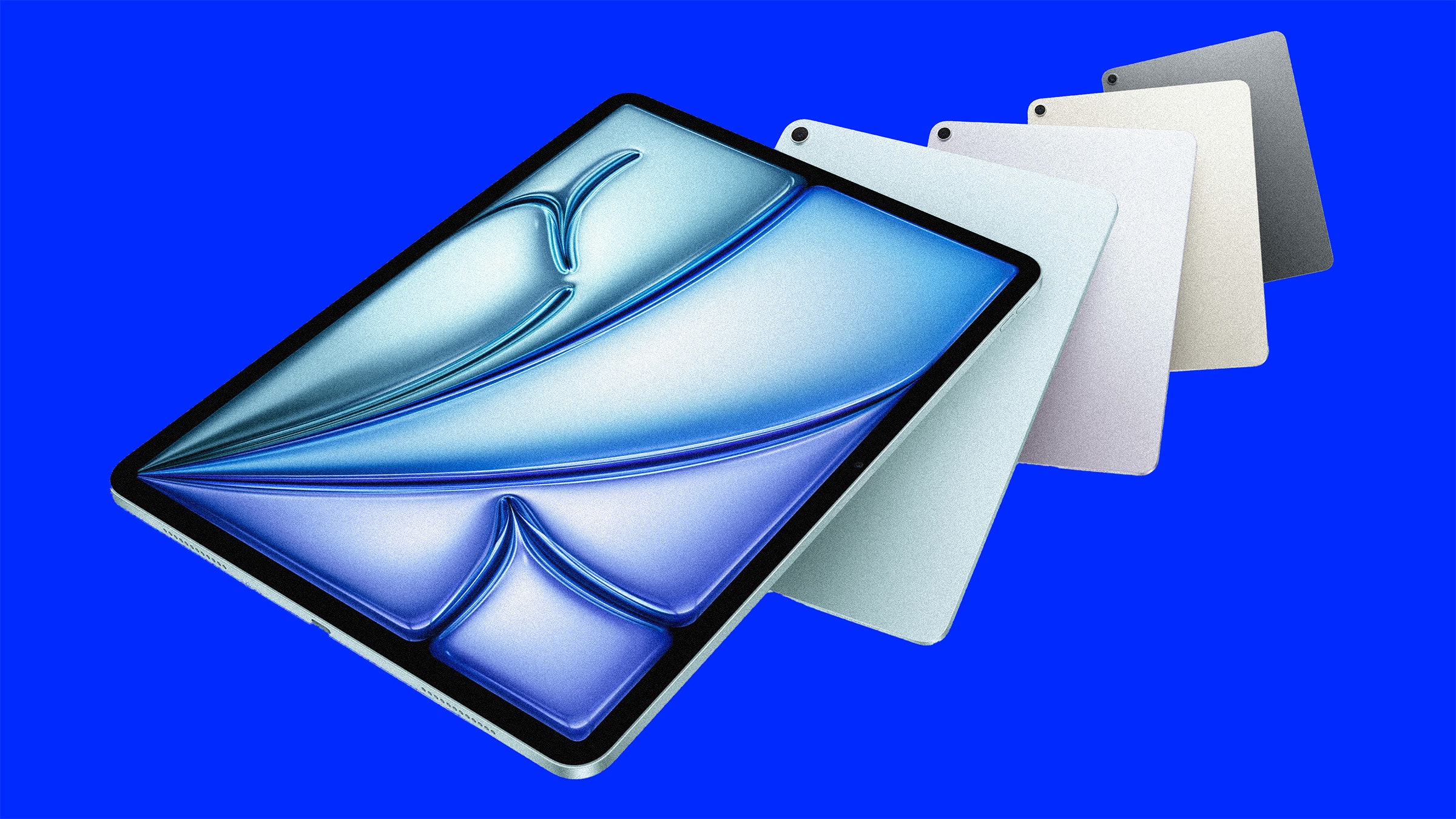
The best FreeSync gaming monitors ensure that your monitor’s refresh rate syncs with your compatible graphics card, resulting in reduced input latency, screen tearing, and stuttering. AMD makes some of the best graphics cards out there, such as the Radeon RX 7800 XT with high frame rates, even at 1440p. (The next generation of AMD GPUs announced at CES this year, the RX 5070 and RX 5070 XT, will release sometime this March, although the exact date and price range is still TBA.)
For your monitor to keep up with the demands of a power-hungry graphics card, you'll need the right tech in place. Our top pick is the Gigabyte Aorus FO32U, a beast of a gaming monitor at a reasonable price. But if you’re looking for something else, we’ve got a host of awesome FreeSync gaming monitors for you to consider.
TL;DR – These Are the Best FreeSync Gaming Monitors:
All of the best gaming monitors should have FreeSync support, but if you’re unsure, this list will definitely tick the right boxes. Gaming PCs should have the best hardware and peripherals to suit your needs, and that includes the type of monitor you choose.
If you have an Xbox Series X or PlayStation 5, you may find that some of these monitors even double up as a screen that will work perfectly with your consoles.
Additional contributions by Kevin Lee, Georgie Peru, and Danielle Abraham.
1. Gigabyte FO32U2
Best FreeSync Gaming Monitor
The best AMD FreeSync monitor of 2025 so far is the Gigabyte FO32U2, which I reviewed when it released last year. This monitor actually comes in two different versions: the standard one, which I'm recommending here, and the Pro, which features DisplayPort 2.1 support if you'd like to future-proof yourself for future generations of graphics cards. It offers an incredible gaming experience with its beautiful QD-OLED display. But thanks to recent price cuts, it's also one of the best value OLED gaming monitors out there. Don't sleep on it.
Even though I review lots of cutting-edge gaming monitors, this is the one I picked out for myself. Its picture is bright and vivid, and the way that Gigabyte balances overall brightness, even in SDR, makes it stand apart from the competition. I'll be completely honest, however: A year ago, this monitor would have had much stiffer competition. The non-Pro version, specifically, now costs well under $1,000, which makes it an even better choice that I'm happy to recommend to my closest friends.
This isn't the absolute brightest QD-OLED gaming monitor you can buy, but it still reaches 1,000 nits in its highlights. And in real world gaming scenarios, you aren't likely to notice a big difference between 1,000 nits and 1,300 nits, which a more expensive monitor on this list is able to reach. Its motion clarity is fantastic thanks to its rapid OLED panel and 240Hz refresh rate, so in that regard, you can use it for the important competitive matches with complete confidence.
The Gigabyte FO32U2 is hard to beat, balancing price and performance impeccably. You can't go wrong choosing it for your gaming setup.
2. Lenovo Legion R27fc-30
Best Budget FreeSync Gaming Monitor
Coming in at just under $200, the Lenovo Legion R27fc-30 is a fantastic pick for any AMD or Intel user. This monitor features a 1080p resolution for crisp visuals on its 27-inch panel. It also features an impressively fast 280Hz maximum refresh rate for next-level motion clarity at this price. Those two features alone make it a perfect fit for competitive gaming without needing to stretch your budget.
That's not all this monitor has going for it, however. It features HDMI 2.1 support for easy connectivity with consoles and has a curved panel that has a 1500R curvature for immersive gameplay without creating text distortion.
It also uses a VA panel for improved image quality. While it's not quite as color-rich as an IPS display, its colors still look great and it offers much better contrast for deeper blacks. Taken as a whole, it's a great value that really impressed me in my testing.
3. LG UltraGear 27GN950-B
Best 4K FreeSync Gaming Monitor
When it comes to 4K gaming monitors, the LG UltraGear 27GN950-B – which I've tested and reviewed – is my favorite, and it just so happens to come with FreeSync support. It's not just any FreeSync either, but FreeSync Premium Pro, ensuring you're guarded against tearing, stutters, and latency while gaming in HDR. This monitor is good to go on the HDR front as well. It's using an IPS panel that can cover 98% of the DCI-P3 color space and achieve high brightness levels to make the most of HDR10 content or games.
When you're gaming, you'll get some serious sharpness on account of the 4K resolution packed into the 27-inch panel, but LG doesn't make you trade speed for resolution. This panel can run at up to 144Hz, letting you go all-in for speed as well. You may not always hit that full speed at 4K, but that's where FreeSync is ready to back you up.
4. Asus ROG Swift PG27AQDP
Best 1440p FreeSync Monitor
For 1440p, it's hard to top the Asus ROG Swift PG27AQDP, which I've reviewed. This gaming monitor offers an incredible 480Hz refresh rate, which allows it to offer class-leading motion clarity. Combined with its screen size and resolution, it offers great pixel density too, so you'll never miss an important detail that could come in clutch in your next competitive match.
The PG27AQDP doesn't come cheap, but if offers a premium feature set and top-tier performance to match its price tag. It's WOLED panel is fantastically bright, reaching 1,300 nits in highlights. Even in SDR, it will impress you with how great it looks. Its colors are rich, and though perhaps not as tightly out-of-the-box accurate as its QD-OLED counterparts, it's still close enough to use for content creation. In fact, I can confidently recommend this display for just about anything you would like to use it for, short of professionally color-critical work.
It's also an excellent choice for pairing with the current generation of gaming consoles. It features two HDMI 2.1 ports so that you can run both your PS5 and Xbox Series X at their maximum 240Hz refresh rate while you take advantage of its enhanced clarity and enjoy its immersive picture. Gaming with a controller doesn't have to mean sacrifice!
5. AOC Agon Pro AG456UCZD
Best Ultrawide FreeSync Monitor
When it comes to ultrawide FreeSync monitors, the AOC Agon Pro AG456UCZD, which we've reviewed, is an absolute monster. Coming in at 45 inches with a 21:9 aspect ratio, this ultrawide becomes the absolute centerpiece of your gaming setup.
Size isn't all it has going for it, though. This monitor also features a fast and vibrant OLED panel that gets plenty bright in HDR and clocks in with a 240Hz refresh rate. Paired with the native 0.03ms response time of OLED itself, the Agon Pro offers pristine clarity, even during rapid motion.
You should know, a 45-inch ultrawide isn't for everybody. It's imposing. But then again, ultrawides themselves aren't for everybody, and if you're the kind of gamer that needs extra screen real estate – and let's be real, who doesn't – the AG456UCZD is tops. While most 21:9 monitors extend their width without offering additional vertical space, the Agon Pro does exactly that, offering more usable space than competing FreeSync monitors.
It also offers next-level immersion thanks to its deep 800R curve. It's not common to see monitors with such a deep radius, but the AG456UCZD is designed to wrap into your peripheral vision as you play, drawing you into the experience. This does have an impact on text clarity, so I'd recommend sticking to a shallower curve if you plan to use it for productivity.
What to Look for in a FreeSync Gaming Monitor
FreeSync is AMD’s branding for its variable refresh rate (VRR) monitor technology. It’s built on top of the open VESA Adaptive-Sync protocol as part of the DisplayPort 1.2a spec. If you have a FreeSync monitor, you’ll get variable refresh rates with just about any modern AMD graphics card.
If you’re running an Nvidia graphics card or using another video source (like a game console via an HDMI input), a FreeSync monitor will act just like a normal monitor.
There are multiple tiers of FreeSync now, including standard AMD FreeSync, FreeSync Premium, and FreeSynce Premium Pro. Each level offers more features and guarantees of higher performance. Here's how they break down:
- AMD FreeSync: This is the standard tier and guarantees variable refresh rate technology to eliminate screen tearing and low frame rate compensation.
- AMD FreeSync Premium: The tier is very similar to the standard tier, however it guarantees a minimum refresh rate of at least 120Hz.
- AMD FreeSync Premium Pro: This is the highest tier available and adds HDR performance to the feature list. While many gaming monitors promise HDR, those with the AMD FreeSync Premium Pro certification have been certified to meet certain quality standards determined by AMD and should offer a higher quality HDR gaming and video experience.

FreeSync Gaming Monitor FAQ
What is VRR?
Basically, a standard monitor is locked to a single refresh rate – that’s the number of times per second that it changes the color and brightness of the pixels on the screen. Your graphics card draws a frame and then waits until the monitor’s next refresh to display it.
This has the effect of making your game jump frame rate between even multiples of the display’s refresh: with a 60Hz monitor, your game will run at 60fps, 30fps, 20fps, 15fps, or 12fps, for example. Disabling vsync will also allow your graphics card to run as fast as possible on any monitor, but it produces an ugly visual artifact called tearing, where the monitor displays partially drawn frames on top of the previous frame.
With VRR technology (G-Sync or FreeSync), the monitor refreshes whenever the graphics card is done drawing the next frame. So your monitor might max out at 60Hz and your game at 60fps, but if your game is running at 52fps the monitor will refresh at 52Hz, drawing the frame immediately instead of waiting for the next 60Hz cycle. So you’ll see the frame rate your graphics card is capable of, not an unnecessary downgrade to 30fps. This also eliminates screen tearing caused by the GPU sending multiple frames to the monitor when it's still rendering a previous frame.
There are two VRR technologies gamers should know about: G-Sync and FreeSync. G-Sync is Nvidia proprietary technology and only works with Nvidia graphics cards. FreeSync is AMD’s brand for a VRR technology and only works with AMD GPUs. G-Sync requires extra hardware in the monitor, driving monitors costs up but maintains consistently high quality. FreeSync has no licensing fee and requires no proprietary hardware, and thus monitors are typically cheaper, but quality control is a little less consistent.
What's the difference between G-Sync and FreeSync?
The best FreeSync and G-Sync monitors perform similarly, with the two VRR technologies aiming to synchronize the refresh rate of the display and the frame rate of the PC or console you’re gaming on. They use the same VESA Adaptive-Sync technical standard and most FreeSync displays work as G-Sync-compatible, or vice versa, even if manufacturers can’t make the claim outright.
The only exceptions are G-Sync and G-Sync Ultimate monitors, which require additional hardware, only work with Nvidia GPUs, and handle adaptive sync through a display’s entire refresh rate – other VRR usually taps out around 48Hz. That means these monitors are often pricier.
You can read more about FreeSync vs. G-Sync.
What is Low Framerate Compensation?
Low Framerate Compensation, or LFC, is a technology built into all AMD FreeSync monitors. When the display detects that your fps is struggling, it will duplicate frames to smooth out gameplay and prevent hitching. This is different than Nvidia's frame generation technology because there is no AI at play and these are not new "generated" frames. It is simply a doubling to ensure gameplay remains fluid. The compensation range varies based on the monitor, so it's important to check the specifications for each display to see if your computer is likely to fall within that range or else it may not benefit you.
When are FreeSync monitors on sale?
The biggest discounts on FreeSync monitors are available on Amazon Prime Day, Black Friday, and Cyber Monday. Gaming monitor deals can also pop up at the end of the summer during back to school sales. Early January, after the winter holidays, is another great time for gamers to take advantage of clearances.
Christopher Coke has been a regular contributor to IGN since 2019 and has been covering games and technology since 2013. He has covered tech ranging from gaming controllers to graphics cards, gaming chairs and gaming monitors, headphones, IEMs, and more for sites such as MMORPG.com, Tom’s Hardware, Popular Science, USA Today’s Reviewed, and Popular Mechanics. Find Chris on Twitter @gamebynight.














